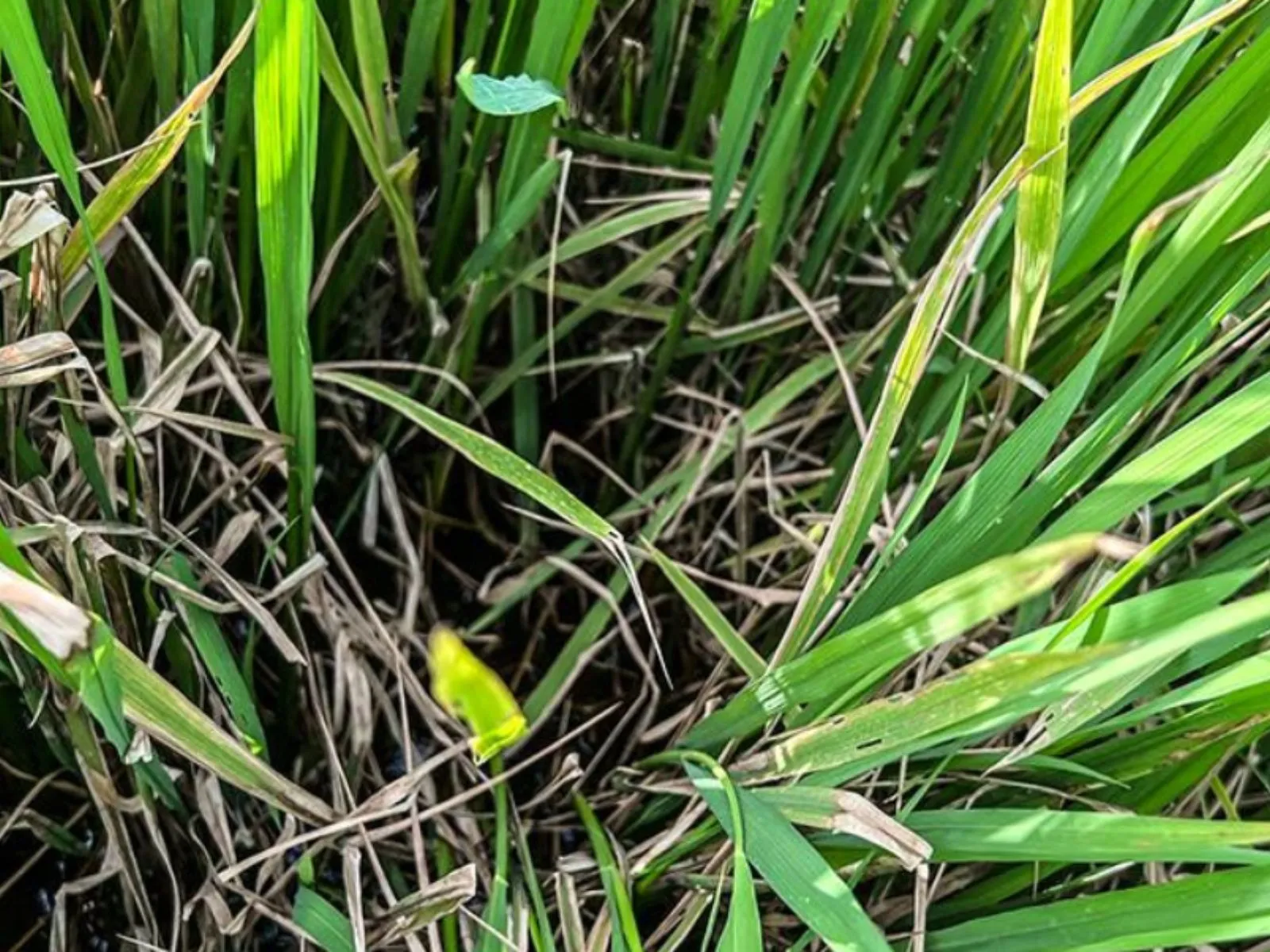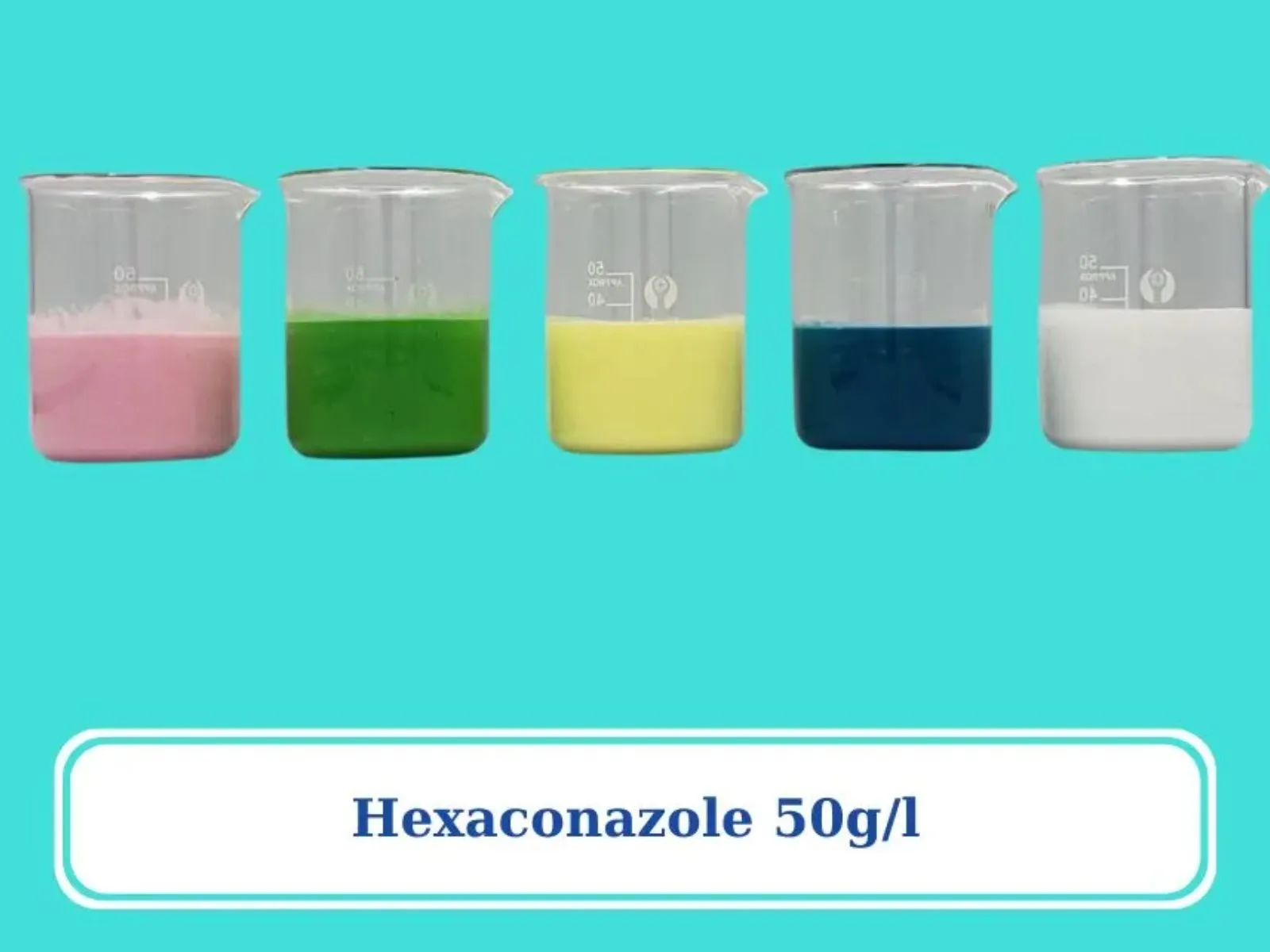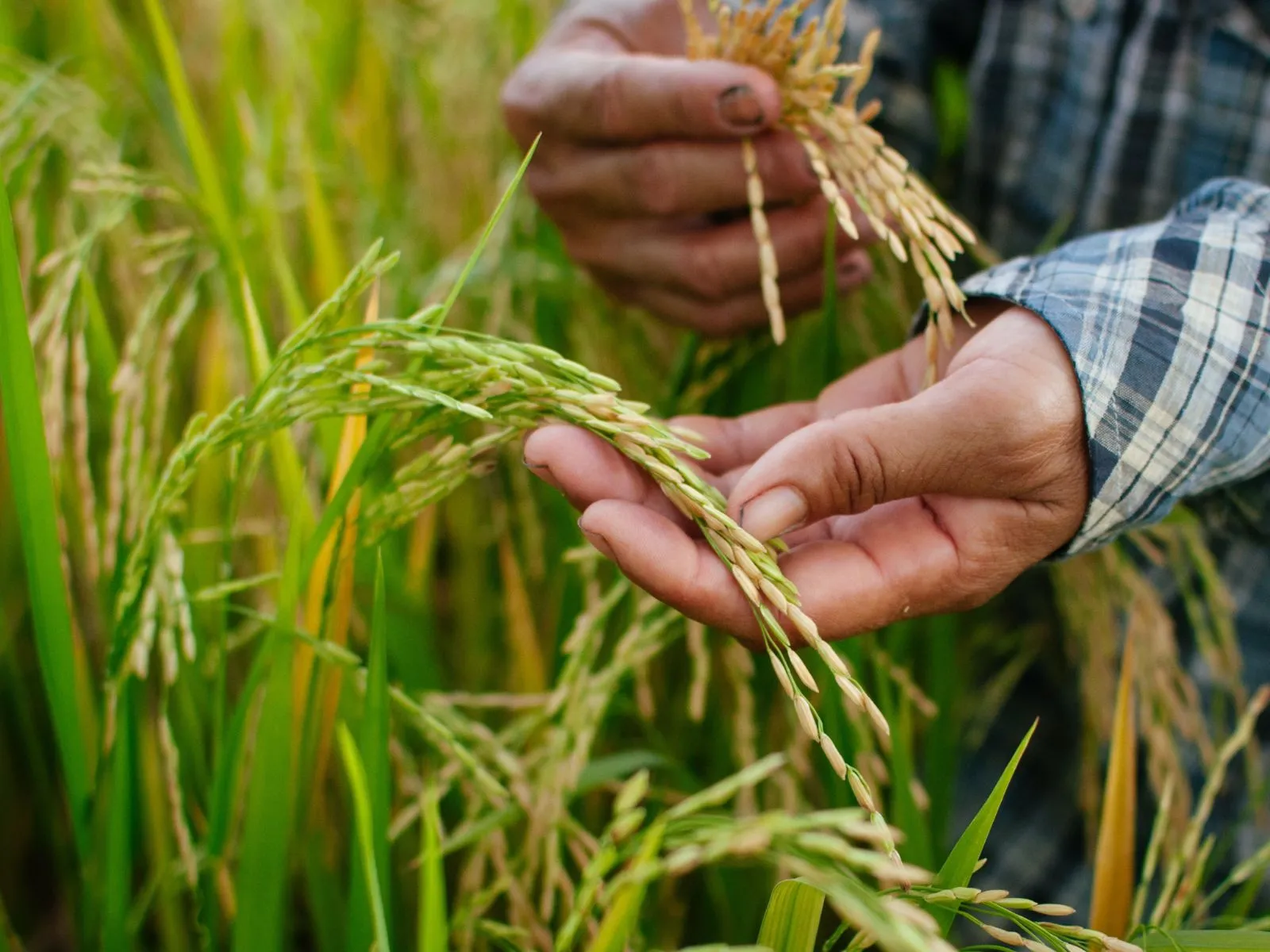Propiconazole for treating brown spot on rice is an effective solution to prevent and treat diseases caused by the fungus Rhizoctonia solani with the ability to penetrate quickly and conduct strongly.
During rice cultivation, sheath blight is one of the most concerning diseases for farmers—especially from the stem elongation to heading stages. A widely recommended solution by experts and growers alike is using Propiconazole to treat sheath blight in rice. But what exactly is this active ingredient, and how does it work? Let’s explore in detail with Sataka.
Propiconazole is a systemic fungicide from the Triazole group, known for its strong penetrative ability. It’s commonly used to treat fungal infections in crops. The compound is absorbed through the leaves and stems, then moves internally throughout the plant, effectively preventing the growth and spread of pathogenic fungi.
Its mode of action is to inhibit the synthesis of ergosterol, a vital component of fungal cell membranes. Without ergosterol, fungal cells cannot develop properly and eventually die off.
![]()
Active ingredient Propiconazole
Sheath blight is caused by the soil-borne fungus Rhizoctonia solani. This fungus thrives and spreads rapidly under conditions such as:
High temperatures (28–32°C)
High humidity in both soil and air
Dense, poorly ventilated rice fields
Excessive nitrogen and potassium deficiency
Early symptoms appear as pale grey lesions on the leaf sheath near the base, which then spread upwards in irregular grey-brown patches. This leads to leaf drying, reduced photosynthesis, and significant yield loss.

Rhizoctonia solani
Propiconazole is highly effective due to several characteristics:
Strong systemic action: After spraying, it is rapidly absorbed and distributed within the plant, even reaching hidden areas.
Stops fungal development: By disrupting ergosterol synthesis, it halts fungal growth and reproduction.
Enhanced efficacy when combined: When used alongside contact fungicides like Chlorothalonil, Azoxystrobin, or microbial products, its effectiveness in both prevention and treatment increases significantly.
![]()
Propiconazole helps treat brown spot on rice
To maximize effectiveness, proper usage is essential:
Dosage:
Based on concentration, use 20–30ml per 25 liters of water for 1,000m².
For products with 250g/L Propiconazole, use 30ml per 25 liters of water.
Application timing:
Best applied at the first sign of infection.
Can also be sprayed preventively during the stem elongation to panicle initiation stage, especially if there’s a history of infection.
Spray technique:
Ensure thorough coverage on both upper and lower leaf surfaces.
Avoid spraying during hot sunny hours or before rain.
Add a sticking agent to improve adherence.
Combination: For severe infections, combine with fungicides of different action modes like Azoxystrobin or biological products to enhance results and prevent resistance.
![]()
Propiconazole can be combined with the active ingredient Azoxystrobin.
Compared to other fungicides, Propiconazole offers:
Strong efficacy against Rhizoctonia solani, the main cause of sheath blight
Dual action: penetrative and systemic protection
No leaf burn, safe for rice plants
Low residue, short pre-harvest interval
Highly compatible with various fertilizers and pesticides

Highly effective in killing Rhizoctonia solani fungus
To ensure Propiconazole delivers not just results but long-term control, farmers should follow these tips:
Rotate fungicides: Avoid repeated use throughout the season. Rotate with other actives like Azoxystrobin, Tebuconazole, or Hexaconazole to prevent resistance.
Don’t overuse: Excessive spraying doesn’t improve control and may stress the crop if residues accumulate.
Combine with proper field practices:
Keep fields clean and well-aerated
Apply balanced fertilizer; avoid overusing nitrogen
Avoid prolonged deep flooding, which favors fungal growth
Prevent early: Don’t wait for full outbreaks. Apply early during the panicle initiation stage if the field has a history of sheath blight.
Spray at the right time: Early morning or late afternoon when leaves are dry and weather is calm. Avoid spraying immediately after fertilizer application.
Respect the pre-harvest interval: Though residue is low, maintain a minimum of 14 days before harvest to ensure food safety.

Alternate with active ingredient Hexaconazole
Propiconazole is a powerful solution for managing sheath blight in rice due to its systemic action and internal fungal control. However, to achieve the best outcomes, farmers should:
Follow correct dosage and timing
Rotate fungicides to prevent resistance
Integrate proper farming techniques (clean fields, balanced nutrition, good water management)
Frequent field inspections are essential to detect early symptoms and act promptly. Proactive prevention and timely treatment not only protect yields but also reduce long-term costs on crop protection.

Should visit fields regularly
Propiconazole doesn’t just stop sheath blight—it helps rice thrive and produce better quality grain. For trusted, high-quality Propiconazole-based fungicides, visit Sataka, your go-to platform for agricultural active ingredients. Get expert advice and order quickly with confidence.